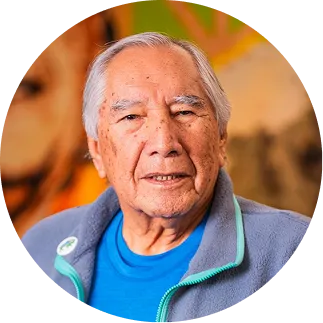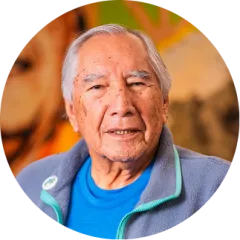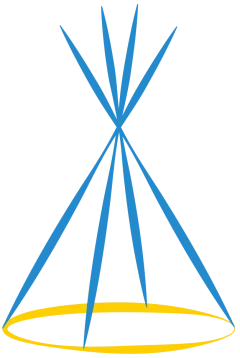Tipi Story
The Tipi Niitoyis
Let me tell you a story.
For the Blackfoot people, niitoyis — the tipi— is where the transfer of knowledge takes place.
The tipi is the home and the centre of the community. It represents the holistic idea of life — from birth to death. It is where babies are born, where they progress through life from children to young adults, to adults and to Elders. It is where teaching and ceremony happen.
There are four keystone poles that make up the tipi structure with supporting poles that come together in a circular design, without hierarchy, intersecting at the top and reaching for the sky and stars. This is the intersection of the living world with the spirit world and it’s where knowledge transfer happens.
The directions — north, south, east and west — are very meaningful. When we put up a tipi, the doorway always faces east because that is where the sun rises, and we welcome Naato’si. The sun is the source of life. There are always prayers and good thoughts as we open the day. The tipi’s canvas completes the lodge and keeps us safe. On the tipi flaps, we have symbols of the butterfly which signifies knowledge.
Like the tipi’s keystone poles, at Iniskim we have four strategic directions and supporting goals, all intersecting, crossing boundaries and transferring knowledge. Everyone is invited to our tipi — it is home for our students, employees, alumni and friends.
The University’s Blackfoot name, Iniskim, means Sacred Buffalo Stone. Where Iniskim exists is based on the land and the totality of the engagement we have with the environment along with the notion of academia. The University of Lethbridge does not exist unto itself. We are one of many beings and it’s the totality of the relationship with all other beings that share our educational sphere. Along with that notion of relationship, is the idea of ‘it’s all of us together’ that will help us achieve our goals.
As a result, everyone has a role to play in actioning our Iniskim’s Strategic Plan and we invite each and every one of you to move forward with us in a good way.


Iikaisskini (Low Horn)
Dr. Leroy Little Bear
(BASc (BA) ’72, DASc ’04)
Vice-Provost, Iniskim Indigenous Relations
We are Iniskim

Iikaisskini (Low Horn)
Dr. Leroy Little Bear
(BASc (BA) ’72, DASc ’04)
Vice-Provost, Iniskim Indigenous Relations

